In pictures: Dambusters 70th anniversary Derwent flypast
- Published
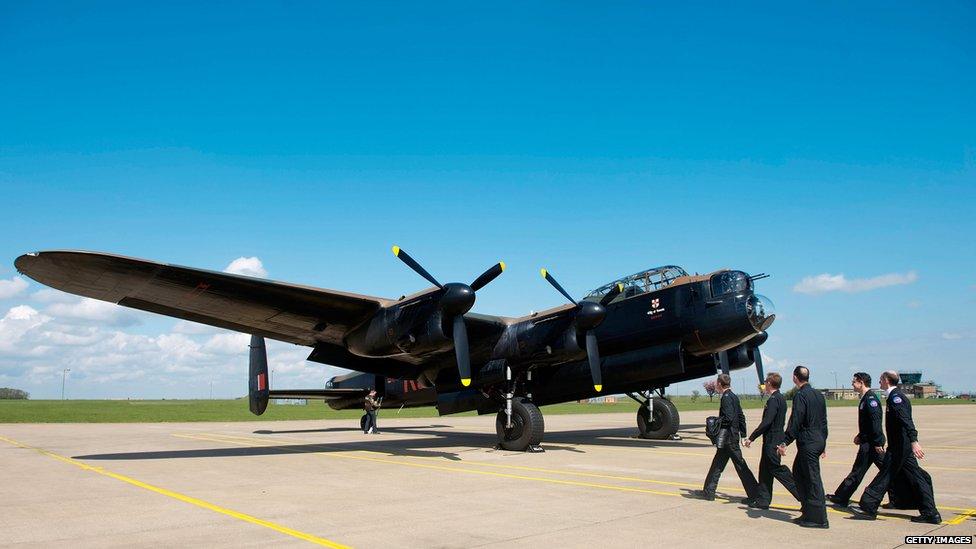
A Lancaster bomber has performed a flypast over Derwent reservoir to mark 70 years since the Dambuster raids. Nineteen Lancaster bombers from the 617 Squadron left in three waves for their top secret mission on 16 May 1943.

The pilots on the Dambusters raids flew low to avoid radar detection. But this was perilous and four out of the five second wave bombers never made it to the German dams.
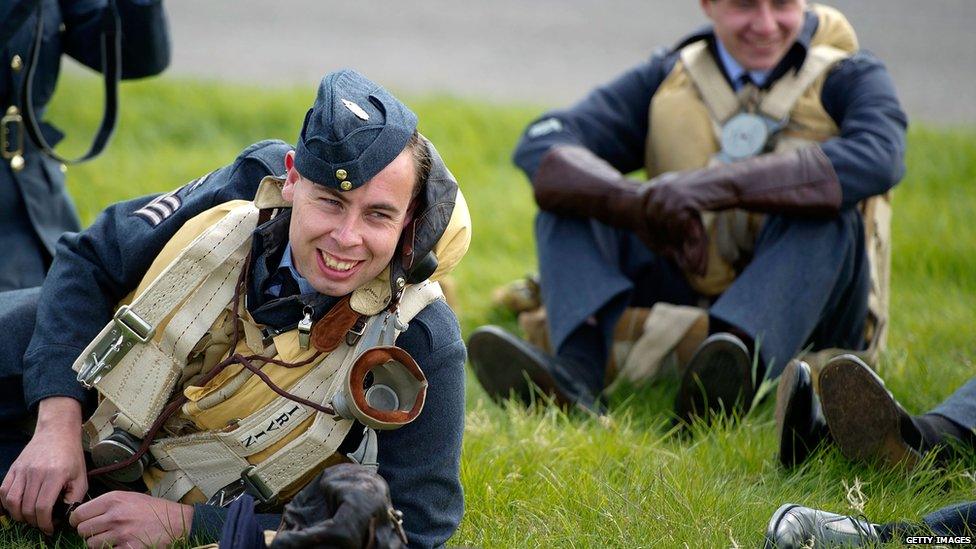
World War II enthusiasts watched as Thursday's flypast took off. Seventy years ago, of the 133 men in the original 617 Squadron, 53 were killed.
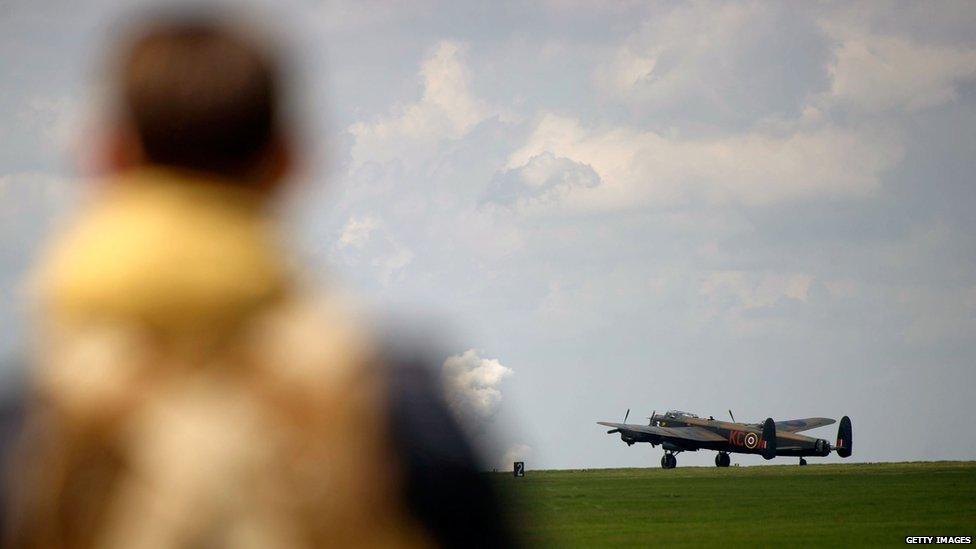
Between May and September, the RAF's Battle of Britain Memorial Flight crew give up three out of every four weekends to fly and display the historic aircraft.
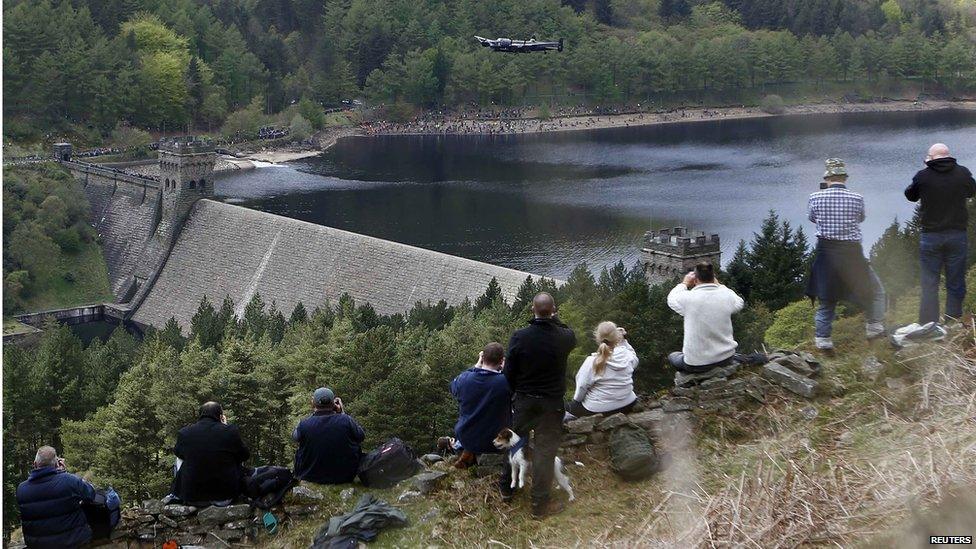
Hundreds of well-wishers gathered on the banks of Derbyshire's Hope Valley - some climbing 300m in nearby woodland to get a decent vantage point.
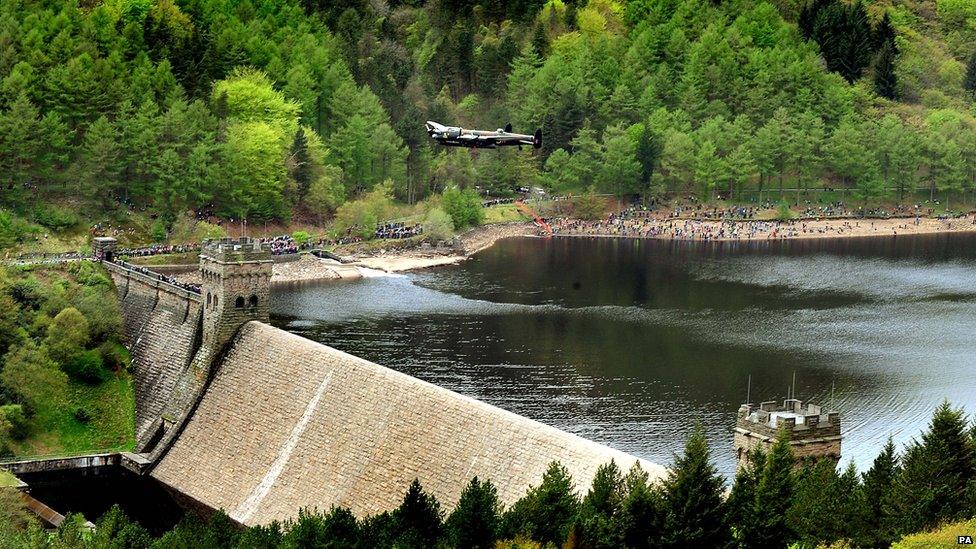
Due to its resemblance to German dams, the Derwent reservoir which played host to today's flypast in Derbyshire was used by the airmen as they practised low-level flying ahead of the raid.
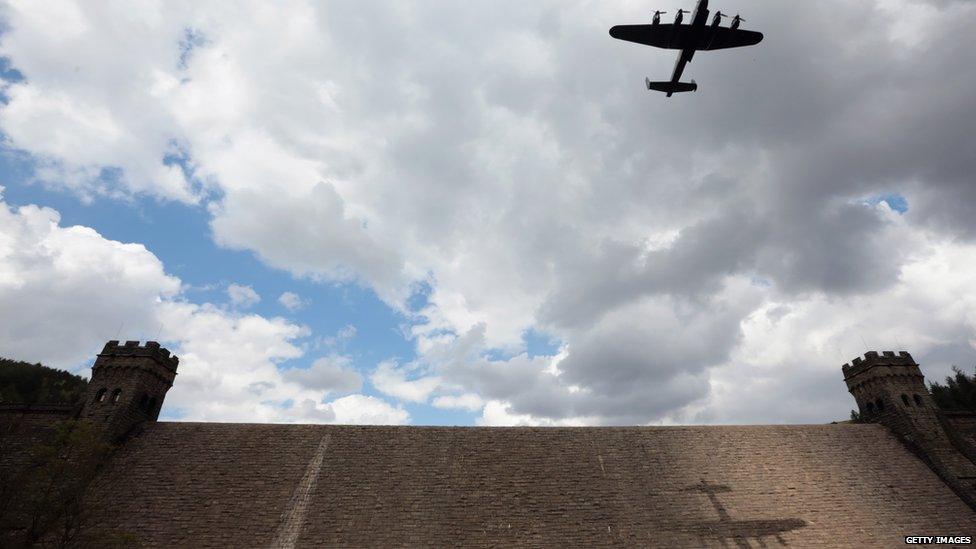
The oil drum-shaped bombs dropped by the Lancaster aircraft and developed by Barnes Wallis were designed to "bounce" across the water, before rolling down and exploding at the bottom of the dam. His daughter said Dr Wallis was a "man of peace" driven by patriotic duty.
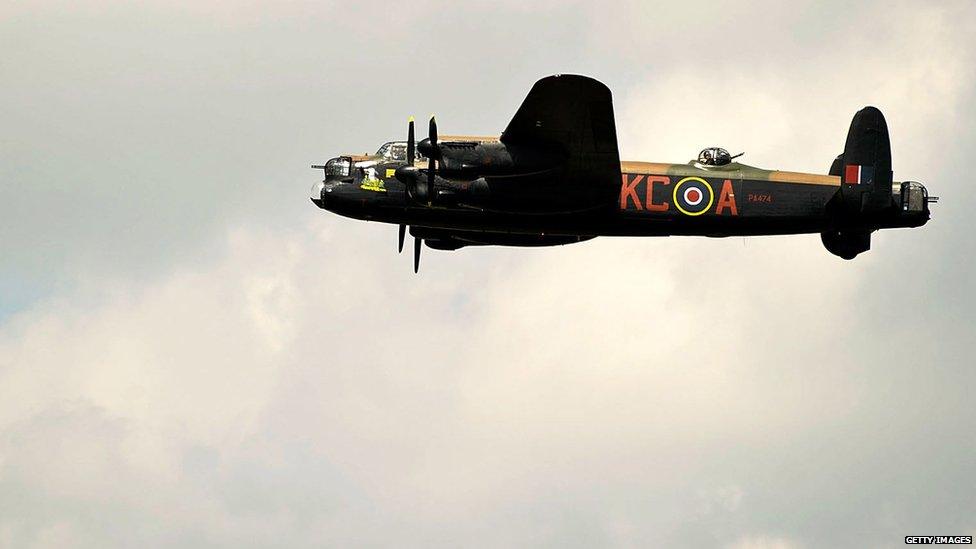
Under fire from enemy guns, to be successful the bombs had to be released at right angles to the dam wall from 60ft above ground at 220mph, 425 yards from the target. Over 1,300 people were killed when the Eder dam was breached.

Taken two months after the daring raid in 1943, the crew of Lancaster ED285/AJ-T at RAF Scampton. Left to right: Sergeant G Johnson; Pilot Officer D A MacLean, navigator; Flight Lieutenant J C McCarthy, pilot; Sergeant L Eaton, gunner. In the rear are Sergeant R Batson, gunner; and Sergeant W G Ratcliffe, engineer.